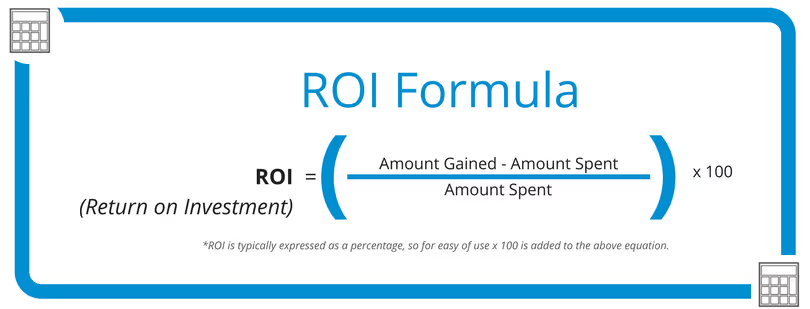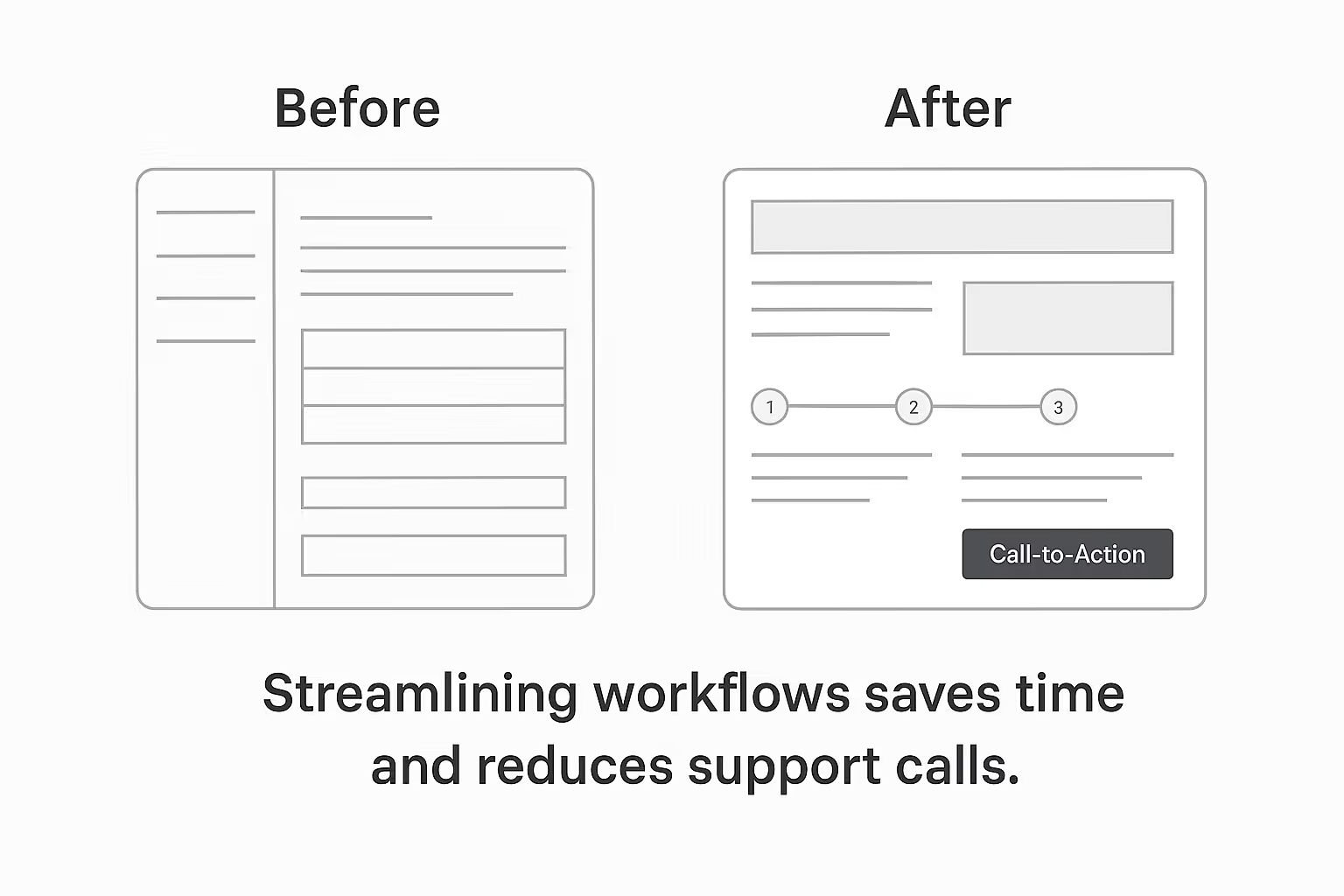Measuring the ROI of User Experience Design
Driving business success
The return on investment (ROI) of user experience design isn’t just about spending less or designing faster, it’s about driving real business outcomes. When done right, UX doesn’t just make interfaces beautiful or intuitive; it measurably improves customer satisfaction, efficiency, and bottom-line results.
In fact, poor UX can be a deal-breaker: nearly 88% of online consumers say they wouldn’t return to a site after a bad user experience. In a crowded digital market, the best-designed products don’t just win, they retain.
What is the ROI of UX Design?
Return on investment (ROI) in UX refers to the measurable value a company gains from investing in user-centered design. This value often becomes clear through quantifiable improvements such as increased conversion rates, higher user retention, fewer customer support requests, and faster task completion. When UX is done right, it doesn’t just make interfaces easier to use, it streamlines operations, boosts revenue opportunities, and reduces costs across departments.
While ROI is commonly associated with financial return, UX design delivers value beyond immediate revenue. It also includes “softer” but equally impactful outcomes; like improved brand perception, stronger customer trust, and enhanced employee satisfaction. For example, an internal dashboard redesigned with a focus on usability might not directly generate income, but it could save employees dozens of hours per month, reduce training time for new hires, and decrease reliance on IT support. Over time, these efficiencies translate into tangible cost savings.
The ROI of UX also shows up in risk mitigation. By identifying and resolving usability issues before launch, UX design helps avoid expensive rework, reputational damage, or product underperformance. A product that fails to resonate with users due to poor UX may require a full rebuild, which costs far more than investing in upfront research and design.
According to Forrester Research, every $1 invested in UX returns up to $100 in ROI, depending on the business model and scale of investment. This estimate reflects not only revenue generation but also reductions in support costs, customer churn, and employee inefficiency.
Ultimately, ROI in UX is about designing with purpose; aligning the user experience with business goals so that every interaction becomes a growth opportunity. Whether you're building a public-facing product or an internal tool, smart design decisions can pay dividends long after launch.
How to calculate the ROI of User Experience: A 5-Step Framework
1. Define the problem
Start with a user or business issue that’s causing measurable inefficiency. For example:
- A 65% cart abandonment rate
- Long call center wait times due to usability issues
- Low feature adoption in a SaaS product
A good ROI case starts with a clear, testable problem statement. UX efforts should solve pain points that align with strategic business goals.
2. Set baseline metrics
Before redesigning, collect relevant KPIs. Common ones include:
- Task completion rates
- Customer satisfaction scores (CSAT or NPS)
- Time-on-task
- Error rates
- Support ticket volume
Without a baseline, you won’t be able to measure ROI meaningfully.
3. Forecast Improvements
Estimate how UX changes could influence metrics:
- Will error rates drop by 50%?
- Could support tickets be reduced by 30%?
- Is a 10% increase in conversions realistic?
These estimates can be informed by usability testing, customer feedback, or benchmarks from similar past projects.
4. Calculate ROI
Use the standard formula:
ROI = (Gain – Investment) / Investment x 100
Let’s say a product redesign costs $50,000 and improves retention enough to bring in an additional $250,000 in revenue in the first year.
ROI = (250,000 – 50,000) / 50,000 x 100 = 400%

5. Communicate results
Turn your numbers into a narrative. Executives want financial clarity. PMs want time savings. Marketers want conversions. Frame ROI in the context of what each group values. Also be transparent: Share assumptions, ranges, and limitations. Credibility builds trust.
Real-World example: a $300 Million UX win
One of the most cited examples of UX ROI is from a case shared by Jared Spool in his book Web Form Design: Filling in the Blanks. A large eCommerce company discovered that requiring users to register before checking out was hurting sales. They replaced the "Register" button with a simple "Continue" button and added a note assuring customers they didn’t need an account to buy.
That small UX tweak led to a 45% increase in sales within one month, resulting in over $300 million in additional revenue over time.
Why UX ROI matters to stakeholders
Designers want products that feel effortless. Executives want to know: is it worth the spend?
UX ROI is where design and business meet. Here’s how design directly supports core business metrics:
- Competitive Advantage: Well-designed products build loyalty. According to Salesforce, 66% of users are willing to pay more for a better experience.
- Cost Savings: Reducing support inquiries by improving usability can save thousands annually.
- Faster Time-to-Value: Streamlined UX increases feature adoption and reduces training time for internal tools.
- Brand Perception: 75% of users make judgments about a company's credibility based on its website’s design.
How to present UX ROI internally
UX design can produce measurable impact, but only if stakeholders understand its value in their own terms. Presenting UX ROI internally requires more than showcasing design work. It means translating design decisions into the business outcomes that matter to your audience.
Here’s how to do that effectively.
1. Frame UX as a business strategy, not a design fix
Most stakeholders aren’t focused on pixels or flows. They care about solving business problems like customer churn, sales pipeline velocity, or operational costs. Instead of centering the conversation on how the interface was improved, reframe UX as a solution to these broader challenges.
For example, instead of saying a dashboard was redesigned for better usability, explain that the new layout reduced the time it takes sales reps to access their performance data, which can support faster decision-making and potentially boost sales team efficiency.
2. Use numbers that speak their language
UX metrics like error rates or click paths aren’t always meaningful to stakeholders. You’ll get more traction by translating those metrics into business outcomes. For example, instead of reporting that “task success rate improved,” explain that fewer errors in the checkout process could reduce abandoned carts and increase completed sales.
A small improvement in a key step of the user journey, like streamlining password reset, might reduce support call volume, cutting helpdesk costs and improving user satisfaction. Even if you can't pinpoint exact savings, offering directional estimates tied to known business costs adds credibility.
3. Create before-and-after comparisons
One of the most compelling ways to present UX ROI is by showing the difference between the old and new experience. This can be a side-by-side walkthrough of user flows, screenshots showing interface improvements, or even summarized usability test feedback.
For example, if users previously had to click through four unclear menus to reach a billing page and now it's accessible from the dashboard, that’s an easy win to show. A side-by-side visual showing the old flow next to the new one reinforces how the update reduces friction and saves time.

4. Lead with outcomes, then explain the how
In presentations, attention spans are short. Start with the business impact of the UX initiative, then provide context. For example, you might open with, “We saw a 25% drop in support tickets related to account setup,” and follow with a brief explanation of how you simplified the onboarding sequence.
This helps non-design stakeholders grasp the value of your work without needing to understand every detail of the design process. It also sets the stage for you to reinforce how future UX investments could drive similar improvements.
5. Anticipate objections and address them proactively
It’s common to face skepticism when discussing UX ROI. Stakeholders may question whether results were caused by design changes or by other variables, such as marketing efforts or seasonal trends. Anticipate these concerns and proactively explain your methodology.
For example, if a redesign improved form completion rates, mention that the form layout was A/B tested and the only variable changed was the UX, not the messaging or traffic source. Being upfront about assumptions and limitations builds trust and demonstrates accountability.
6. Tailor messaging by department
Different teams care about different metrics. When presenting UX results to cross-functional stakeholders, tailor your framing:
- For executives, highlight how the redesign contributed to cost savings, revenue growth, or improved KPIs.
- For product managers, focus on feature adoption, time-to-release improvements, or reduced backlog from fewer support issues.
- For marketing teams, emphasize reductions in bounce rate or increased conversions on high-value pages.
- For customer support, share reductions in ticket volume or improved self-service metrics.
For instance, if a new help center design reduced how-to inquiries by 20%, this is a message that speaks directly to support leadership. Meanwhile, an improved sign-up flow with a 10% lift in trial starts will be more relevant to growth and marketing teams.
UX isn’t a cost, it’s a growth strategy
UX is no longer just about aesthetics or usability, it’s a core driver of business growth.
Whether you’re improving onboarding flows, cutting error rates, or redesigning complex workflows, UX work has real ROI. The key is making that value visible, not just to users, but to leadership.
Need a real-world example of ROI to gain stakeholder confidence? Read all about our SchoolMessenger redesign in TechBehemoths or contact us to start a high-return, low-risk UX project that moves your metrics forward.